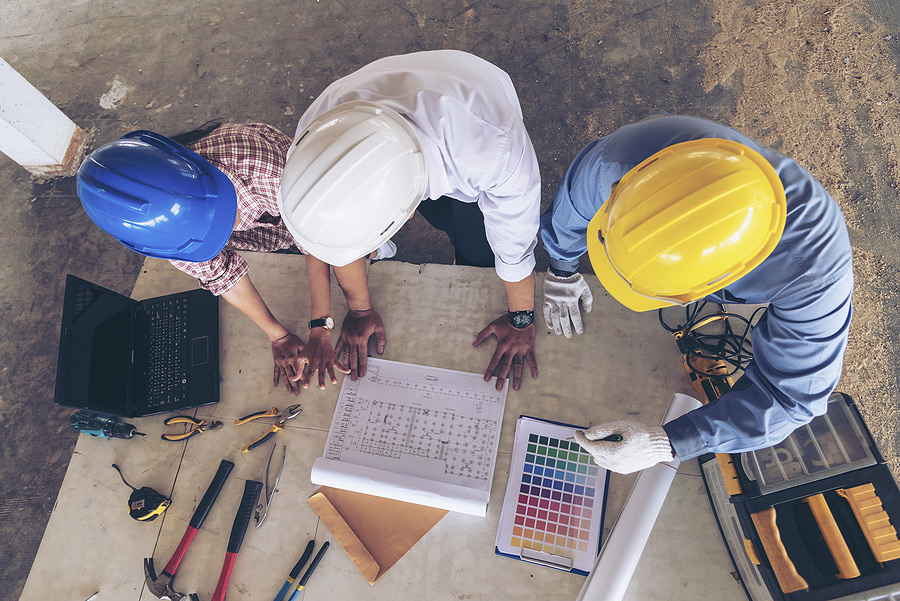Does Working Safely Slow You Down?

In short, the answer to the question posed in the title of this article, "Does working safely slow you down?" is, most likely, "Yes." However, appropriately done, slowing down at certain stages could increase your efficiency – and therefore, your "speed" – in other stages. The question you should be asking, then, is, "How and when should we slow down to ensure that safety has the least effect on the overall project/process schedule?"
Before
Slowing down before you begin the work is something that is desperately needed in safety-sensitive work.
When you rush into a job, hazards are bound to be missed. Safety should be considered in the planning stages of any project, but often isn't. Many times, it isn't considered until boots are on the ground and the workforce is already in harm's way. If it hasn't been evaluated by that point, it possibly won't be considered at all. Workers will proceed as directed, with or without the proper equipment. Management will be reluctant to do anything that is going to affect the schedule. The best time to take a step back to consider safety is before the work even begins.
Slowing down to consider safety before the start of a job should come in the form of the safety department attending project planning meetings, reviewing drawings, and performing a hazard analysis of the work that your company intends to accomplish. Similarly, in a manufacturing setting, early safety intervention could come in a review of your SOPs. Before the start of a project is an excellent time to ensure that all SOPs consider employee safety or in the form of equipment design if you're having custom equipment built. There are many opportunities to involve your safety team at this step of the process.
Another critical aspect of slowing down prior to beginning work is ensuring that all employees have the necessary training to perform the job safely and successfully. Workers are often thrown into situations without any formal instruction on how to perform their tasks, let alone instruction on safe work practices. Not only does OSHA require training in certain circumstances, but lack of training is one of the most common root causes for injury and other incidents. Logic dictates that it would also be one of the most effective ways to prevent injuries and incidents.
During
If your planned approach to safety is simply to stop and fix problems in the field or on the production floor as you find them, you can all but guarantee that injuries and other incidents will occur. Near misses will become injuries. Continue on that path, and injuries will become lost time injuries. Eventually, without a change in approach, lost time injuries could become fatalities.
Of course, without planning for safety, you could jump right up to amputation or fatality without any precursor. Consider this approach the trial-and-error approach. The "let's just see what happens" approach. When you state it that way, does it seem like a good idea? None of this is to say that you should not stop work and review your safety procedures when you find something wrong or experience an incident.
Of course, you should. There will always be mistakes and to not learn from them is to repeat them over and over. But we should not be relying on stopping work when we find problems or when we have incidents as our primary safety approach.
After
Once we finish a project or once we have a process up and running, it would be easy to rush headlong into the next one, disregarding all that occurred on this one. Hey, it was a success, right? Even if it wasn't, those problems had to do with that project or process, not the upcoming one. This is a scary train of thought. No project or process exists in a vacuum. What you experience on one, you are likely to experience on another. Each project, successful or riddled with problems, should be reviewed, and analyzed. Out of necessity, we should determine what needs to be changed, if anything.
Were you successful – or injury-free – by accident or by design? Was it your proactive safety approach that discovered potential issues before becoming a real-life hazard, or did your workers experience a lot of luck? If you had injuries and incidents, what was learned that could be useful in future planning? What procedures need adjusting? What equipment needs changing? What training is needed before you begin again? Learning from our experiences is what helps us to get better every time.
Conclusion
Yes, safety will probably slow you down, but this is, in fact, a good thing. It's naïve to think that schedules and other pressures don't restrict you from slowing down whenever you need to, for unlimited amounts of time. Clearly, stopping only during work is going to impact your timeline the most.
What if safety reviewed the drawings of your project? You could order the proper fall protection equipment while other planning was taking place. Wouldn't that impact your schedule less than finding your already-mobilized crews shut down. You can't restart the job until you review the situation, purchase the necessary equipment, and train your people how to use it. Would designing out a hazard cost you less time and money (as well as human life) than realizing the problem only after a fatality? No doubt. Stopping during work should only be used in conjunction with stopping to plan prior to a job starting and stopping to review after the job has been completed. The more you do the latter two things, the more you minimize the number of times you will need to slow down once the work has commenced.


